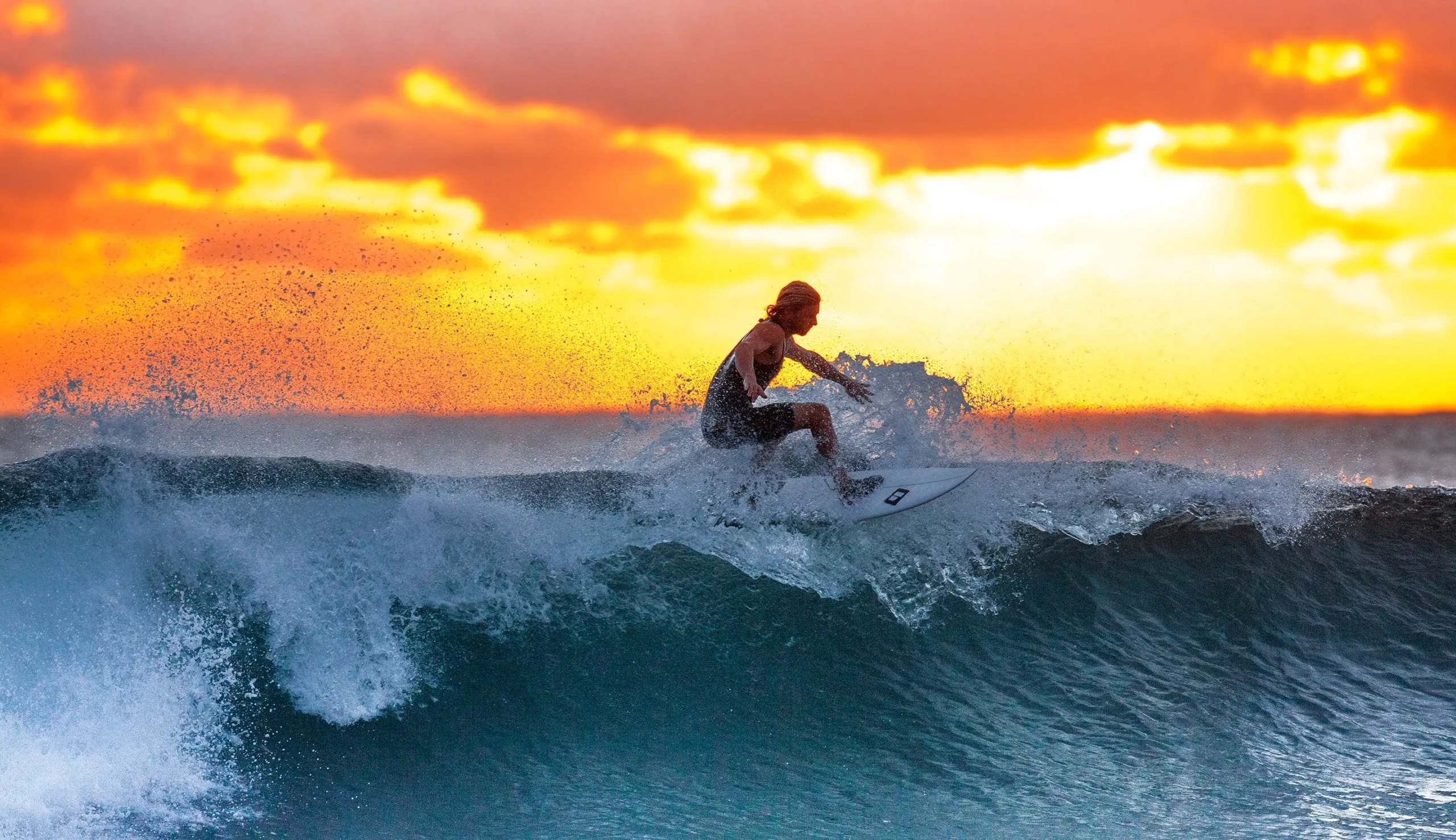The best time to surf depends on various factors, including the location, weather conditions, and personal preferences. What time of year are you going? What time of day is ideal for your schedule? Here are some tips and tricks to consider when planning your trip.
TIME OF YEAR
Surfing conditions often vary throughout the year. In many locations, the best time to surf is during the summer months when swells are more consistent. However, this can vary depending on the region. Some surf destinations have optimal conditions during the winter months when larger swells are common. Research the specific surf spot you plan to visit to determine the ideal season.
LOCATION
Southern California, USA: The prime time for surfing in Southern California is typically during the late summer and fall, from around June to October. This period offers warm water temperatures, smaller crowds, and consistent swells. However, the winter months can also provide larger waves, especially during storm systems. For more details on surfing in Southern California, visit lushpalm.com/surfing-california/#surfing-southern-california.
Hawaii, USA: Hawaii is known for its year-round surf, with different islands and breaks offering varying conditions throughout the year. The winter months (November to March) see larger and more consistent swells on the North Shore of Oahu, attracting professional surfers for big wave riding. In contrast, the summer months (May to September) offer smaller waves on the South Shore, suitable for beginners and intermediate surfers. For more information on surfing in Hawaii, visit www.perfectwavetravel.com/hawaii-surf-guide/.
Gold Coast, Australia: The Gold Coast experiences great surf conditions from March to November. Autumn (March to May) and spring (September to November) tend to have the best combination of consistent swells, warm water, and comfortable weather. Visit www.mywavefinder.com/destination/gold-coast-australia-surfing-guide/ for more details.
Bali, Indonesia: Bali has a tropical climate and offers surf opportunities year-round. The peak surfing season is generally from April to October when the famous breaks like Uluwatu and Padang Padang receive consistent swells from the Indian Ocean. The wet season (November to March) can still provide good waves but is accompanied by more rainfall. For more information on where to surf, visit www.surfindonesia.com/bali-surf-spots/.
Jeffreys Bay, South Africa: Jeffreys Bay is famous for its world-class right-hand point break. The best time to surf in Jeffreys Bay is during the winter months, from June to September, when powerful swells from the Southern Ocean deliver epic waves. This period is also associated with offshore winds, making for excellent surfing conditions. For more details on surfing here, visit surfline.com/surf-news/mechanics-of-jeffreys-bay-jbay-worlds-best-right-point/28782.
TIME OF DAY
Early Morning: Many surfers prefer to hit the waves early in the morning, typically around sunrise. During this time, the wind is often calm or offshore, creating clean and glassy conditions. Additionally, the crowds are usually smaller, providing a more peaceful and enjoyable surfing experience.
Late Afternoon/Evening: Another popular time to go surfing is in the late afternoon or evening, a few hours before sunset. During this time, the wind can turn offshore again, creating favorable conditions. Moreover, the water and air temperatures are usually warmer, which can be more comfortable for some surfers.
OTHER FACTORS
Swell Forecast: Pay attention to the swell forecast for the area you intend to surf. Swells are generated by distant storms, and their size, direction, and period can greatly impact wave quality. Websites and apps dedicated to surf forecasting can provide valuable information on upcoming swells, helping you plan your surfing sessions.
Wind Conditions: Wind can greatly affect wave quality. Generally, offshore winds (blowing from the land towards the ocean) create cleaner waves, while onshore winds (blowing from the ocean towards the land) can make the waves choppy and messy. Check the wind forecast to choose a time when favorable offshore or light winds are predicted.
Tides: The tides play a crucial role in wave quality, especially at certain surf breaks. Some spots work better during high tide, while others are more suitable during low tide. Research the tidal patterns of the location you plan to surf and consider the ideal tide for that specific spot.
Local Knowledge: Local surfers often have valuable insights about the best time of day to surf in their area. They are familiar with the local conditions and can provide guidance on the optimal times based on factors such as wind patterns, tide changes, and swell direction. Consider reaching out to local surfers or checking online forums for their recommendations.
Personal Preference: Ultimately, the best time of day to go surfing depends on your personal preferences and schedule. Some surfers enjoy the tranquility of early morning sessions, while others prefer the warmer temperatures and potential evening glass-offs. Experiment with different times of day to find what suits you best.
Remember, these are general guidelines, and conditions can vary from one surf spot to another. It’s important to research and gather information specific to your desired location to ensure the best surfing experience. Check local surf forecasts and consult with surfers familiar with the specific area you plan to visit, as conditions can vary widely even within the same region. Conditions can vary from day to day, so it’s important to check surf reports and forecasts to make an informed decision about the ideal time to hit the waves.
We offer surf lessons and board/wetsuit rentals year-round! Visit us at www.sandiegosurfingschool.com to find a package that works best for you and your family!











